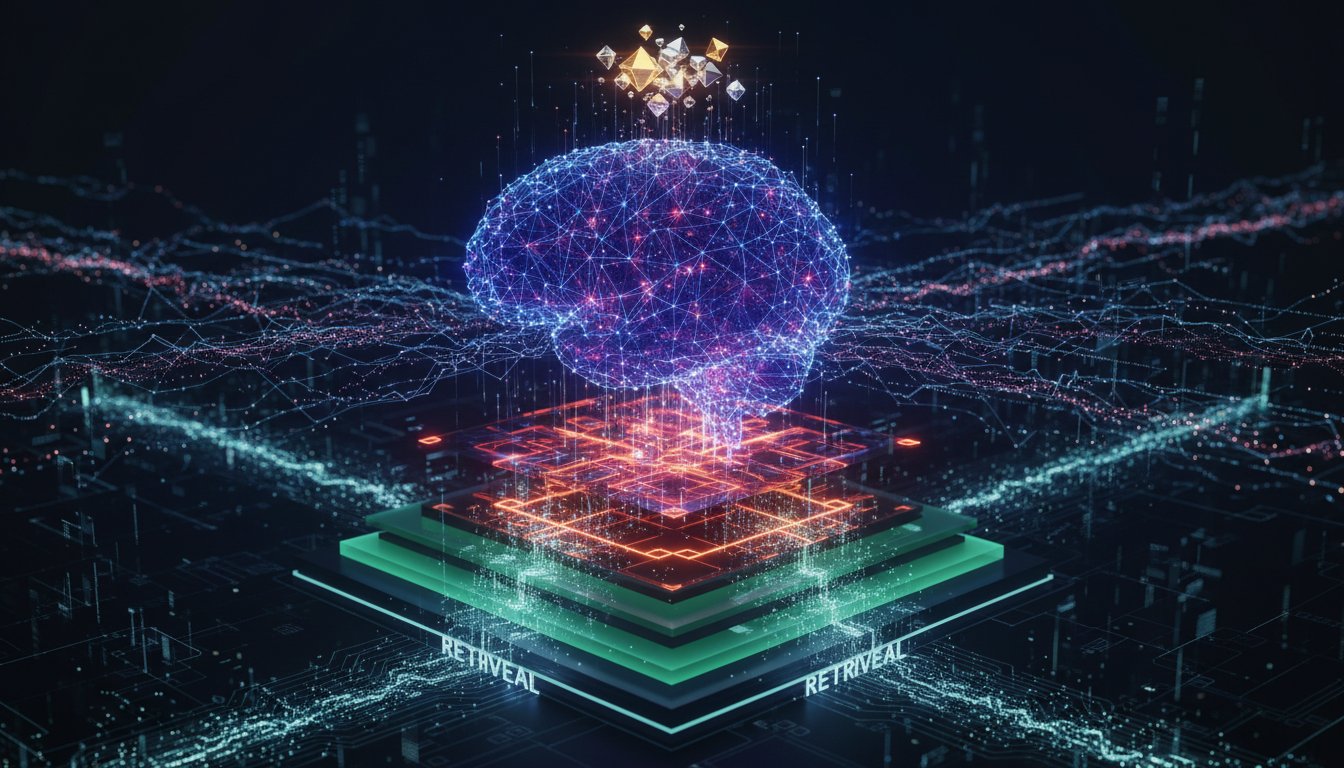The Evolution of Enterprise RAG: How Far We’ve Come
Imagine a world where your AI models don’t just regurgitate information, but truly understand and apply it with pinpoint accuracy. That’s the promise of Retrieval-Augmented Generation (RAG), and it’s rapidly becoming a reality for enterprises.
But the journey hasn’t been a straight line. RAG has evolved significantly over the past few years, driven by advances in both retrieval techniques and generative models. Early RAG systems were often clunky, slow, and prone to errors. Today, they’re more sophisticated, efficient, and reliable, empowering businesses to unlock the full potential of AI. This blog post will explore this evolution, diving into the key milestones, challenges overcome, and future directions of RAG in the enterprise.
We’ll cover:
- The origins of RAG and its initial limitations
- The pivotal advancements that have shaped its development
- Real-world examples of how enterprises are leveraging RAG today
- Emerging trends and the future of RAG
By the end of this post, you’ll have a clear understanding of how far RAG has come and where it’s headed, providing you with the knowledge to evaluate and implement RAG solutions effectively in your own organization.
From Humble Beginnings to Enterprise Powerhouse
The Genesis of RAG
RAG emerged as a response to the limitations of traditional generative AI models. These models, while capable of generating impressive text, often lack the contextual awareness and factual accuracy required for enterprise applications. Early iterations focused on augmenting the generation process with information retrieved from external knowledge sources. This allowed models to tap into a broader range of information than was explicitly included in their training data.
Initial Challenges and Limitations
Early RAG systems faced several challenges:
- Retrieval Accuracy: Accurately identifying and retrieving the most relevant information from a vast knowledge base was a significant hurdle.
- Integration Complexity: Seamlessly integrating the retrieved information into the generative process proved challenging, often resulting in disjointed or incoherent output.
- Computational Cost: The retrieval and generation steps added significant computational overhead, making RAG systems slow and expensive to operate.
Key Advancements Shaping the RAG Landscape
The evolution of RAG has been driven by several key advancements in both retrieval and generation techniques.
Enhanced Retrieval Techniques
- Vector Databases: The advent of vector databases, like Pinecone and Weaviate, has revolutionized the retrieval process. These databases allow for efficient similarity search, enabling RAG systems to quickly identify the most relevant information based on semantic similarity.
- Hybrid Retrieval: Combining different retrieval methods, such as keyword-based search and semantic search, has further improved retrieval accuracy and coverage.
Generative Model Refinements
- Fine-tuning for RAG: Generative models are now being fine-tuned specifically for RAG tasks. This involves training the models on datasets that include both the retrieved information and the desired output, allowing them to better integrate and utilize the retrieved information.
- Improved Context Handling: Advancements in transformer architectures, such as longer context windows and attention mechanisms, have enabled models to better handle the retrieved information and generate more coherent and contextually relevant output.
According to AWS
RAG improves the accuracy and reliability of generative AI models by grounding them in authoritative knowledge bases.
RAG in Action: Enterprise Use Cases
Today, RAG is being deployed across a wide range of enterprise applications.
Customer Support
RAG-powered chatbots can provide more accurate and helpful answers to customer queries by retrieving information from product documentation, knowledge bases, and FAQs. This reduces the need for human intervention and improves customer satisfaction.
Content Creation
RAG can assist in content creation by generating drafts, suggesting relevant topics, and verifying factual claims. This speeds up the content creation process and ensures the accuracy and quality of the output.
Knowledge Management
RAG can be used to build intelligent knowledge management systems that allow employees to easily find and access the information they need. This improves productivity and reduces information silos.
Glean states
There have been successive enhancements in both retrieval techniques and generative models over time
The Future of RAG: Emerging Trends
The future of RAG looks bright, with several emerging trends poised to further transform the landscape.
Multi-Modal RAG
Extending RAG to handle multiple modalities, such as images, audio, and video, will open up new possibilities for enterprise applications. For example, a multi-modal RAG system could be used to analyze customer feedback from various sources, including text, audio recordings, and video reviews.
Explainable RAG
Making RAG systems more explainable will be crucial for building trust and ensuring responsible AI. This involves developing methods for tracing the origin of the information used to generate the output and providing explanations for why certain decisions were made.
Adaptive RAG
Developing RAG systems that can adapt to changing knowledge bases and user needs will be essential for maintaining their accuracy and relevance over time. This involves incorporating mechanisms for automatically updating the knowledge base and personalizing the retrieval and generation processes.
Conclusion: The RAG Revolution is Here
The evolution of RAG has been remarkable, transforming it from a promising concept into a powerful tool for enterprises. From addressing the initial limitations of retrieval accuracy and integration complexity, to leveraging advancements in vector databases and generative model fine-tuning, RAG has overcome significant hurdles. Today, it’s being deployed across a wide range of use cases, from customer support to content creation and knowledge management.
The future of RAG is even more exciting, with emerging trends like multi-modal RAG, explainable RAG, and adaptive RAG poised to further revolutionize the way enterprises leverage AI. As RAG continues to evolve, it will become an increasingly essential technology for businesses seeking to unlock the full potential of AI and gain a competitive edge. Remember that initial picture of a world where AI understands and applies information with accuracy? That world is closer than ever, thanks to the ongoing evolution of Enterprise RAG.
Ready to Explore RAG for Your Enterprise?
Contact us today to learn how our RAG solutions can help you unlock the full potential of your data and transform your business. Visit https://parallellabs.app for more information.




